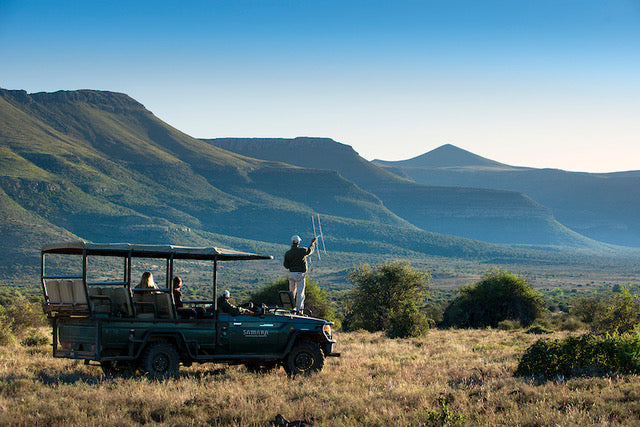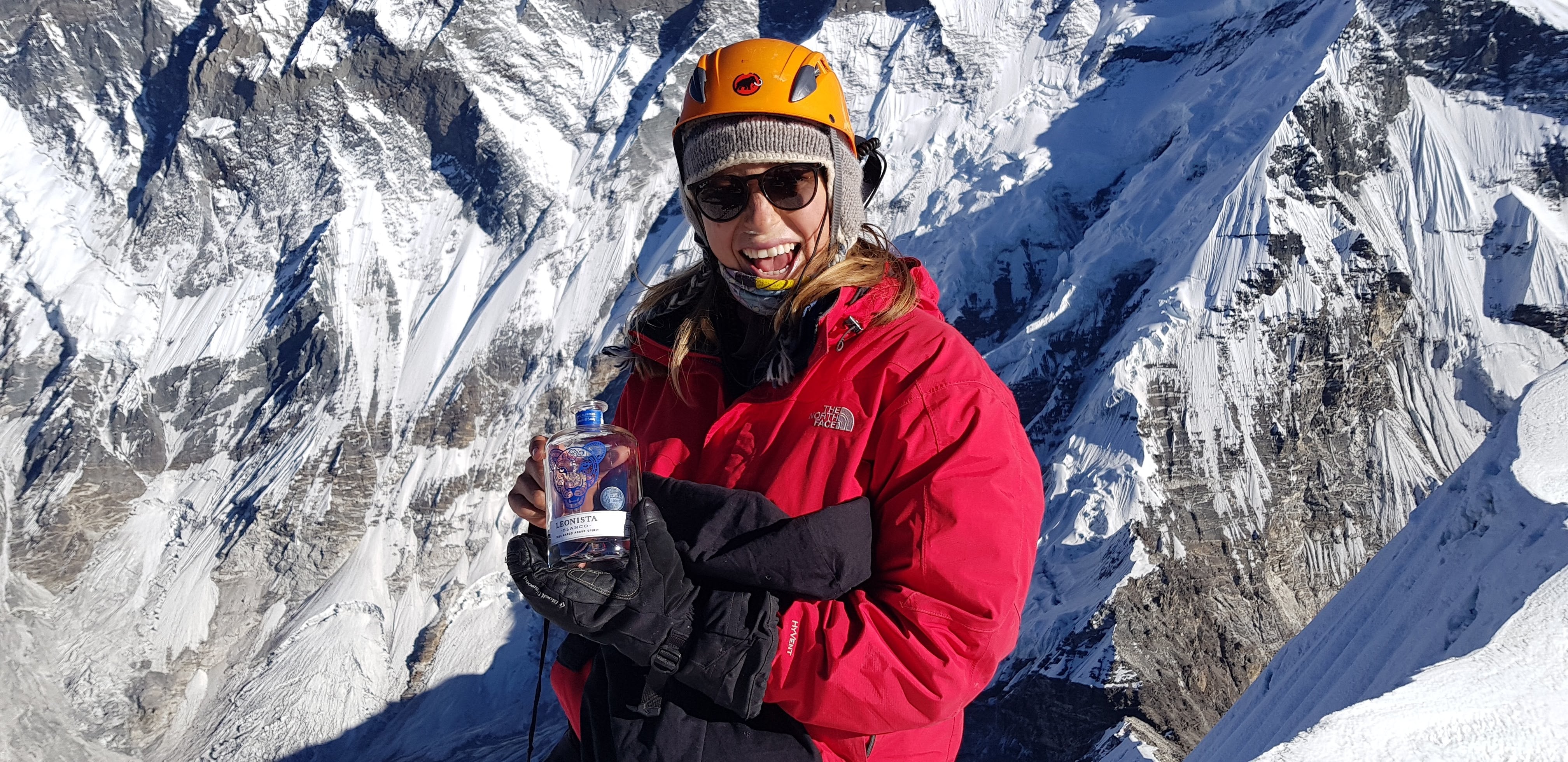Article: Bringing lions back to the Karoo - The story of Samara

Bringing lions back to the Karoo - The story of Samara
Sarah Tompkins – How Samara was founded, our rewilding vision & lion reintroduction
It all started in the mid-1990s after the advent of democracy in South Africa. My husband Mark and I were visiting the Anglo-Zulu War battlefields in Kwa-Zulu Natal with friends. We stayed in Rorke’s Drift and sat around the fire listening to the late David Rattray tell the tales of the battles that had occurred – it was a very emotional experience that brought all the guests together and got them talking.
Afterwards at dinner we began chatting to our neighbour at the next door table, who happened to be an estate agent from Graaff-Reinet, a small town in the Eastern Cape. He started telling us about his part of South Africa – the Great Karoo – weaving tales of its historical significance, the amazing herds of millions of springbok that long ago migrated there, the other wildlife including rhinos and cheetahs and the now-extinct Cape Lion, the characters of yesteryear and the haunting beauty of the place. We were captivated by the idea of playing a small part in returning the land, which was now crisscrossed with fences and farms, to its former glory. On the spot we agreed we would go and visit the area the next time we were in South Africa (at the time we were living in Paris).
So a few months later we did just that, and stayed overnight in the Drostdy Hotel in Graaff-Reinet with our two young children. And that’s when I thought I remembered the Karoo of my childhood, as seen when driving from Johannesburg (where I grew up) down to the coast for Christmas holidays – dry and dusty with nothing in sight but tumbleweed and the occasional sheep. I told my husband that there was no way we were going to buy one square inch of such a desolate landscape! But we thought it would be a bit churlish to turn back, so we drove out to the first farm, Apieskloof, that we’d arranged to visit, and as luck would have it, we just fell in love.
There had been good rains that year and the veld was green and lush – once we turned off the tar road and up into the mountains the beauty of the place unveiled itself – so unlike what I had always thought the Karoo to be like. Suffice to say we were smitten. The dream was reignited and we bought the farm.
That was almost 25 years ago. In the intervening years we purchased another 10 farms to create what Samara is today – 27,000 hectares (or 67,000 acres) of born-again wilderness encompassing a wide range of topographies and vegetation. We consulted experts from the word “Go” in order to ensure that we acquired enough land with the right habitats to eventually sustain the wild animals that used to be here.
We see Samara’s journey as continually evolving in response to the best available science, and although the word “rewilding” was not really part of the lingua franca back in 1997, it has come to accurately embody what it is we are trying to achieve here – restoring the landscape back to its healthy, resilient, wild state.
We began by restoring the herbivore community including eland, red hartebeest, black wildebeest, the endangered Cape mountain zebra and springbok. These reintroductions were accompanied by an active land rehabilitation programme, which included soil erosion control, removal of alien vegetation and the planting of Spekboom, a succulent “miracle plant” with a knack for carbon sequestration. In 2003 we reintroduced the first wild cheetah back into the area in 125 years, a female known as Sibella. Black rhino followed suit in 2013, elephant in 2017 and finally lions, the apex predator, in 2019.
For a long time we had held off from reintroducing lions to the reserve. A large part of our hesitation stemmed from the impact that they might have on our cheetahs. Sibella, in particular, was an extraordinary cheetah who had been born in the North-West province and badly mauled by hunters and their dogs. After being rescued from death’s door and spending 5 hours on the operating table she was rehabilitated and eventually brought to Samara, where she went on to raise 19 cubs to adulthood – an extraordinary feat for a wild cheetah. As a result of her ordeal at the hands of man, she had an injury on her back legs that would occasionally crop up and slow her down. We wanted to wait for her to live out her natural life before introducing lions back onto the reserve. And so, when Sibella passed away in 2015 at the ripe old age of 14, we started to make plans for their reintroduction.
The reasons for bringing lions back were severalfold, but the most important to me was the fact that our rewilding mission could never be complete without returning all the pieces of the biodiversity puzzle. Lions have such a role to play when it comes to keeping antelope numbers in check, governing how they use the landscape and vegetation (what the ecologists call “landscapes of fear”) and increasing the carrion load in the veld, which assists the return of scavengers. In fact, we’ve been amazed by the behavioural changes we have witnessed from certain species since reintroducing lions. The black wildebeest have been targeted by the Founders Pride whose territory encompasses our mountaintop “Samara Mara”. In response they have been producing many more calves – clearly, there is safety in numbers. The black backed jackals, which used to prey on springbok lambs as they were being born, are now becoming scavengers again and frequenting lion kills hoping for scraps. This has meant that our springbok populations have increased with the arrival of lions. These unanticipated changes have been quite remarkable to witness.
Currently, Samara has two lion prides – Founders Pride and River Pride. Founders Pride is made up of the first two lions to return to our region in around 180 years – a male in his prime named Titus and a female named Sikilela – as well as their three sub-adult youngsters, two males and a female. River Pride consists of Sheba, an adult female with Kalahari genes, and her four sub-adult cubs. As the youngsters reach maturity and the males start seeking independence from the maternal pride, they will be translocated to other reserves and national parks across sub-Saharan Africa to ensure genetic diversity throughout the population. In natural, open systems, the migration of genetic material would take place naturally as dominant lions expelled their younger sons from the territory in which they grew up. This is Nature’s way of preventing male lions mating with their sisters and mothers. In smaller, fenced systems, as is the case across much of South Africa, human intervention is required to aid in this process – it’s what we call a “modern migration”.
After many years of supporting lion conservation from afar, it is a privilege for us to be able to contribute in a meaningful manner to the preservation of this iconic African King of the Beasts.





Leave a comment
This site is protected by hCaptcha and the hCaptcha Privacy Policy and Terms of Service apply.